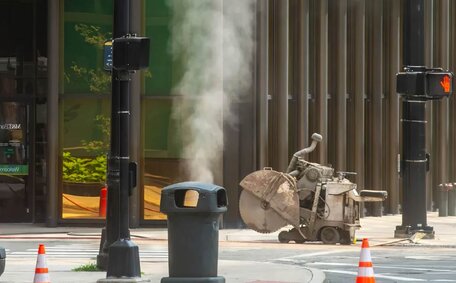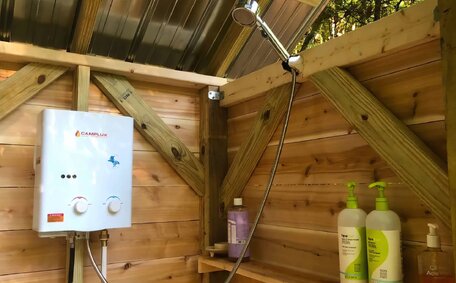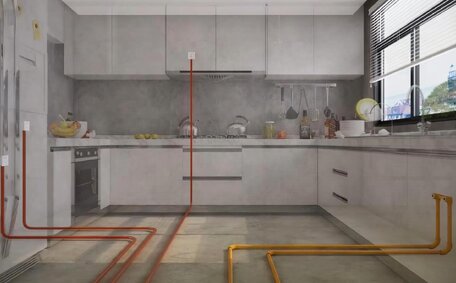
How To Move A Gas Meter
Need your gas meter relocated? You can’t move it yourself - contact your supplier to arrange for a gas engineer to reposition it safely. Charges may apply depending on circumstances.
Read MoreHair commonly causes blocked drains and adopting various methods can address this issue effectively within your home. Shed hair that accumulates in your sink gradually becomes a primary cause of blockages, particularly in high moisture areas like showers and bathtubs.
Our technicians in Menai, Sydney, regularly help homeowners prevent hair from causing drain blockages. During shampooing or shaving, if not controlled, strands of hair make their way into drains, increasing the risk of blockages. Though seemingly harmless individually, accumulated hair strands can significantly clog your drains.
This article will cover the most common signs of hair blockages, understand why hair causes issues, provide tips for removing hair from drains, and detail preventative steps to avoid future clogs.
The stringy nature of hair can cause it to intertwine, forming clumps that are difficult to remove from drains. As long hair and loose hairs start going down drain pipes, they combine with oil, grease, soap residue and other particles to form dense clogs.
As we shed hair daily, over time, thick meshes of hair, soap scum, and grime adhere, causing clog walls and making it challenging to get hair out of the drain. During washing, hair clings to pipe walls, leading to blockages in kitchen and bathroom sinks, showers, and tubs.
Wet hair often sticks together and coils around pipe bends in showers, resulting in accumulations that can lead to blockages. Once an initial hair clog forms, it can grow as more loose hair strands get ensnared. Eventually, if water backs up, it’s time to realise that a dense hair clog has become a serious issue.
Bobby pins, toilet paper, cotton swabs, and dental floss often get entangled in hair build-up, leading to obstructions. When hair combines with other materials, it can create a dense obstruction within your plumbing system. Hair binds with grease, soap scum other residues, oils, and skin cells, becoming problematic in plumbing systems.
To combat hair clogs, installing a suitable hair-catching drain cover in showers is a practical measure. Regular maintenance ensures no hair passes down the drain during shower trap unclogging. Using hair catcher stoppers can help guide shed hair to appropriate waste pathways during washing, preventing clogs.
There are Several clear signs indicating your drain may be clogged with hair:
Such symptoms, if mild at first, can worsen, signalling the need for a comprehensive pipe clearing. The slower drainage and gurgling sounds, improved by a cup baking soda in your shower, suggest a partial blockage, where expert intervention can help clear severe clogs that could damage your plumbing.
Identifying early signs of a hair clog is crucial before the problem affects other areas where pipes can suffer damage. When hair and debris build up, drainage can back up over time, allowing water to infiltrate and damage walls or floors around pipes. It’s important to catch and remove hair quickly to clear clogs and protect your plumbing.
If you’re pondering over how to unclog drains blocked by hair, consider that you can easily use a drain snake or a chemical drain cleaner as a first step. However, if DIY methods are unsuccessful, professional help provides access to high-powered tools to clear major hair obstructions.
There are several effective ways to prevent hair from entering drains and causing clogs:
Proactive steps to keep your drains free of hair clogs ensure that accumulation is never enough to cause severe blockages. Catching strands early and practising good drain hygiene is crucial.
One effective homemade solution to clear clogs is the baking soda vinegar method. Here is a simple way get a step-by-step soda vinegar process:
A wire hanger, fashioned as a makeshift snake, can also tackle hair obstructions mechanically. This inexpensive tool is something you can find readily available at most hardware stores. To use:
Wear rubber gloves to protect your hands and avoid scratching your drain, opting for a plastic snake if available.
If DIY methods fail to open the drain, call our team at Menai Plumbing on 1300 349 338. Our professional equipment, including hydrojetting, is effective against severe clogs from hair build-up and tree roots.
For With drains clogged at complex drain opening junctures, a professional plumber can locate and dismantle the piping to manually extract the blockage. Compared to the hassle and cost of repairs from water damage, the expense of a plumbing call-out is generally cheaper.
Drain snakes, also referred to as plumber’s augers, are an effective DIY solution for when drains get stubborn hair clogs. This affordable tool threads down the drain pipe, using metal hooks to catch and extract hair obstructions.
Be cautious not to scratch the pipes when using the snake. Consider a plastic version instead of metal snakes to prevent damage.
For severe hair clogs, which in some cases are exceptionally persistent, call our team at Menai Plumbing on 1300 349 338. We have industrial strength drain augers that can bore through even the toughest obstructions.
Alternatively, hydrojetting is an advanced solution we can do for the sewer line, using highly pressurised water to scour blockages away. This achieves deeper cleaning than standard snakes.
With extensive equipment and expertise clearing all types of drain blockages, contact us for urgent assistance or to prevent recurrence of problems.
Mixing vinegar baking soda is one of the most effective home remedies for dissolving hair clogs. The chemical reaction can take effect, generating fizzing and heat that helps break down hair.
To remove hair blockages with this treatment:
Enzyme drain cleaners, which are accessible at supermarkets and hardware stores, can dissolve hair within a few hours. These products contain bacteria cultures that break down organic matter like hair over 12-24 hours.
Simply pour the cleaner down the clogged shower drain as detailed in the product instructions. Do not combine with other drain cleaning chemicals, and for severe clogs, you may need multiple applications of enzymes.
If DIY treatments fail to clear hair from your drains, contact our team at Menai Plumbing on 1300 349 338. Our high-powered water jetting can scour away even the toughest hair obstructions.
While many minor hair clogs can be cleared with DIY methods, certain situations indicate the need to call in a professional plumber:
Trying to remove these blockages mechanically with drain snakes or pressure hoses can aggravate the issue and harm the pipes. Have an expert inspect to locate and resolve the blockages.
At Menai Plumbing, we offer a suite of comprehensive services, including drain cleaning using advanced methods like hydro jetting. Our powerful jet streams can clear your drains of years of built-up hair, restoring free flow.
Our high-capacity augers, similar to those used by specialist plumbers, can effectively cut through tough blockages. Our camera inspections accurately identify all blockage locations. For extensive hair damage or pipe repairs, our expertise is crucial.
Don’t hesitate to email us or call 1300 349 338 to schedule an appointment if you suspect a severe hair clog. Prompt action can help minimise further drainage issues and costly repairs.
Need your gas meter relocated? You can’t move it yourself - contact your supplier to arrange for a gas engineer to reposition it safely. Charges may apply depending on circumstances.
Read MoreInvesting in a solar hot water system can save up to 75% on water heating costs. With great returns and added home value, solar hot water can be a smart choice over electric or gas heaters. Contact us to see if it’s the right investment for your home.
Read MoreWhile natural gas and propane can both power appliances in your home, they have notable differences when it comes to BTU output, infrastructure, safety, cost and more. Understanding these key contrasts will help you determine which is better for your specific needs.
Read MoreMenai, 2234 NSW
We will call back as soon as possible.




